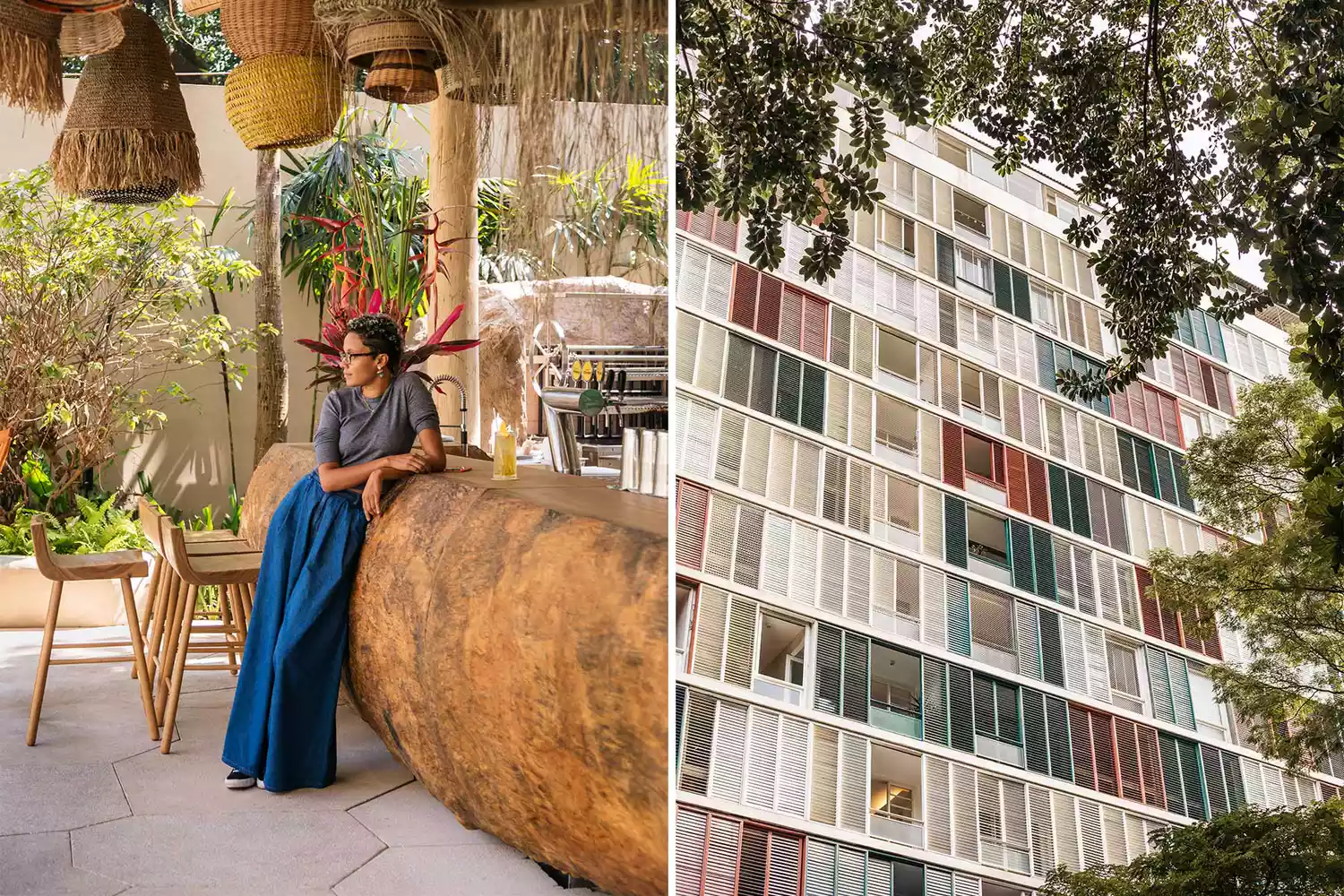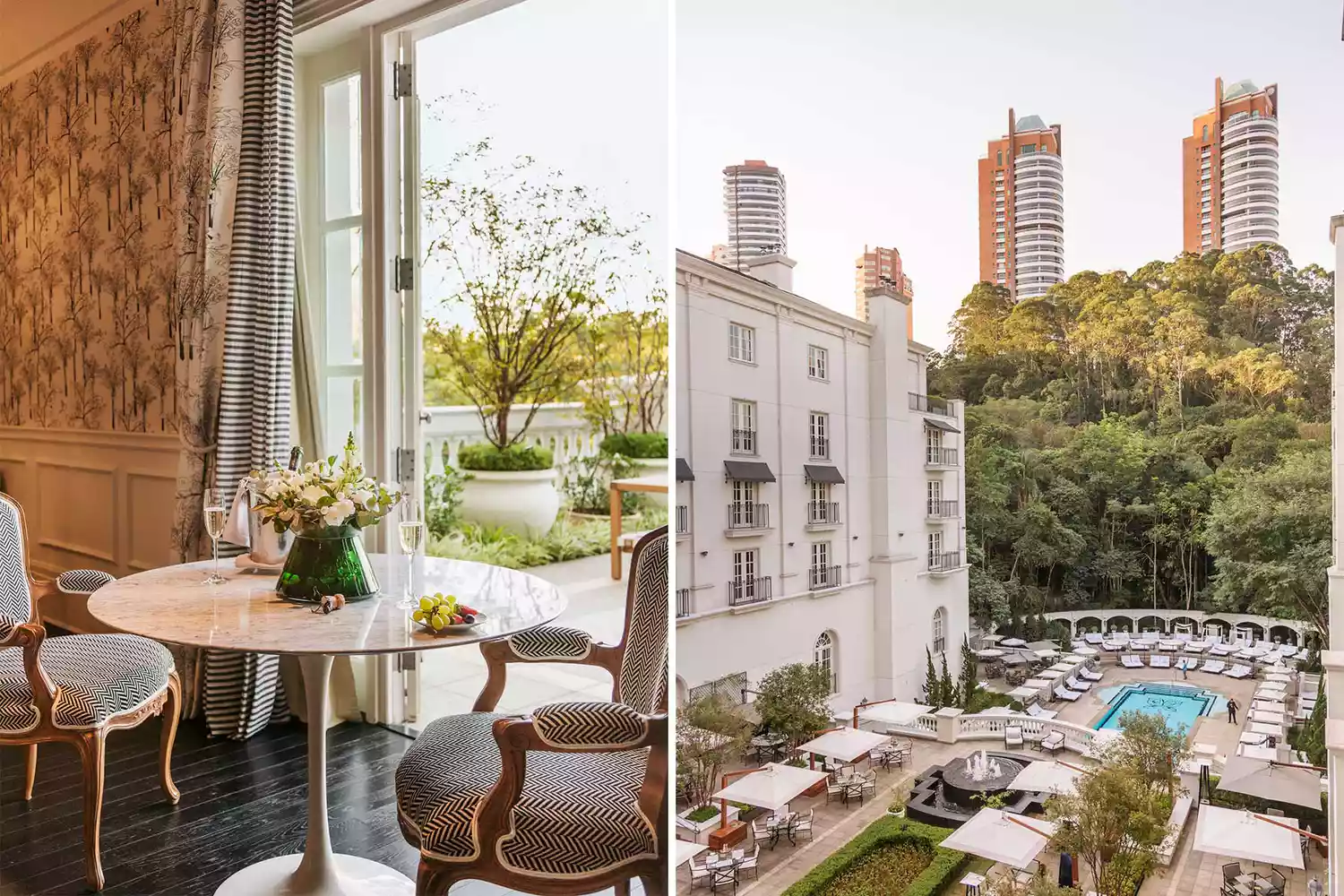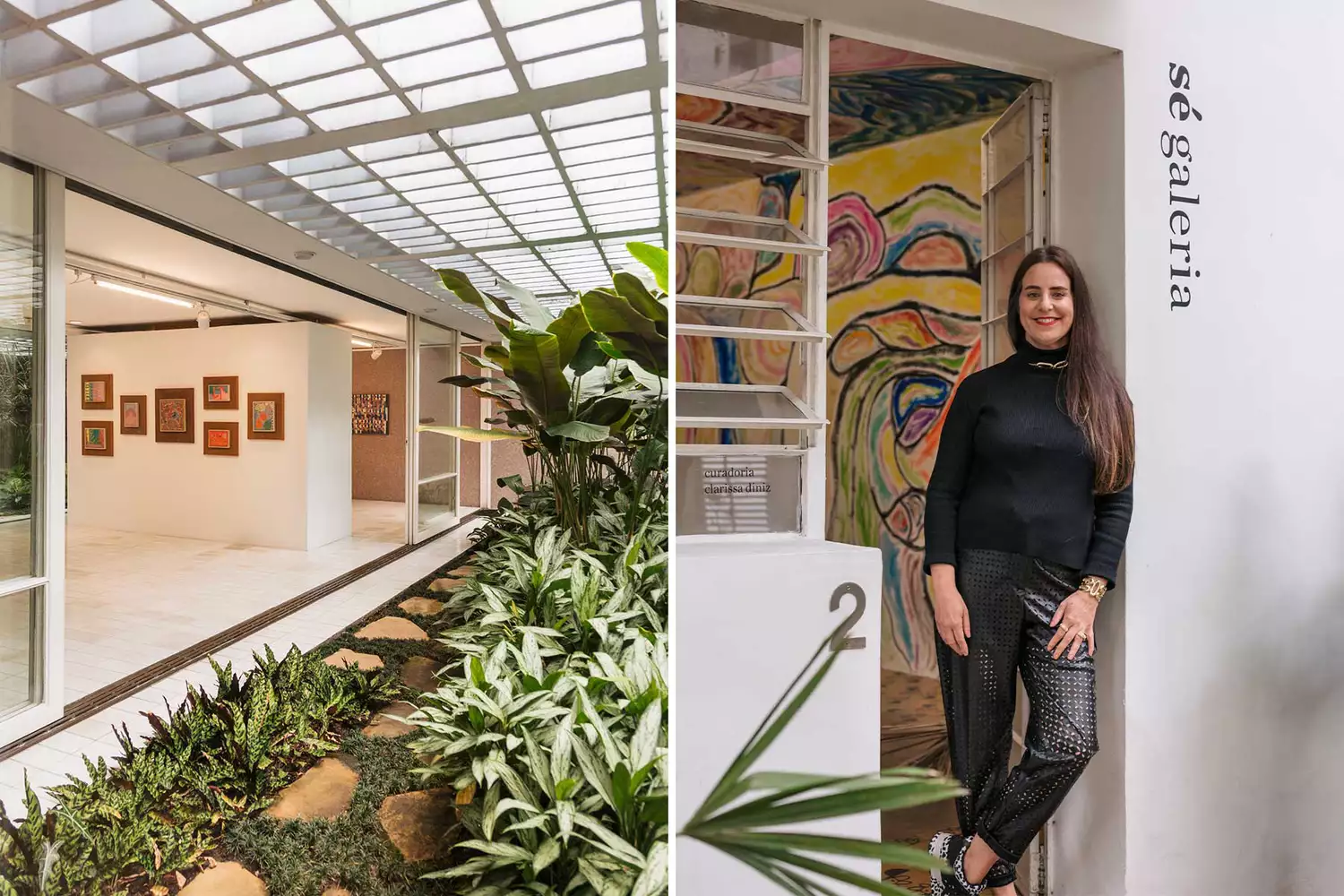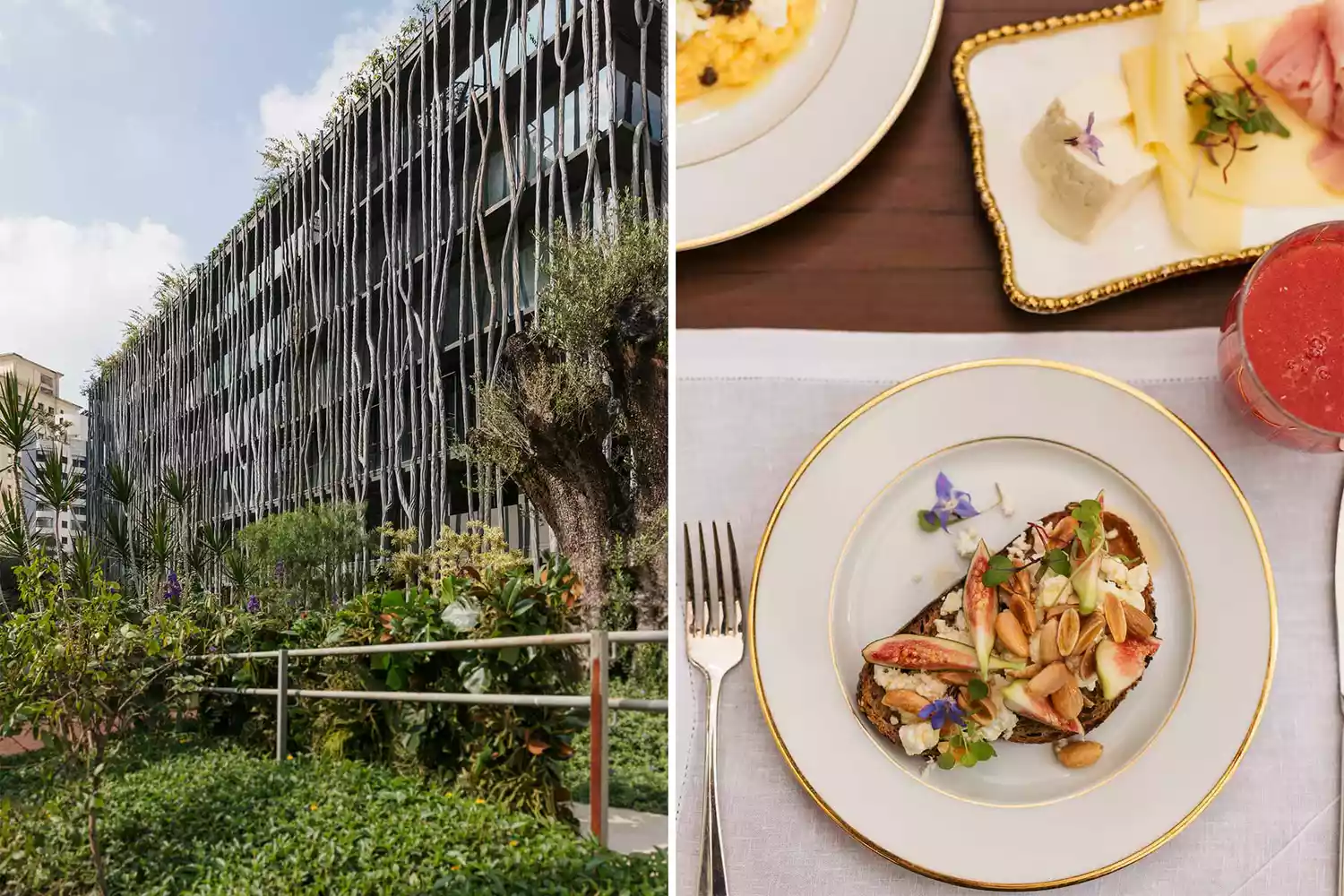The largest megacity in Brazil is characterized by an unquenchable, multicultural dynamism that feels more enticing and contemporary than ever.
The residents who settled there saw Avenida Paulista, So Paulo's most renowned street, as an escape from the heat and bustle of a freshly booming provincial town when it originally spread across a 328-foot-high ridge south of the city center in 1891. Around 65,000 people lived in So Paulo at the time; it was a young commerce hub for the nearby coffee farms. However, as exports took off in the late 1800s, the city started to expand. Huge acres of land, a long promenade, and fresh air were all available in Paulista, where businessmen and coffee barons erected palaces in an eclectic mix of foreign architectural styles. It was also an effort to "emulate the vitality of the country inside the city," as architect and photographer André Scarpa told me on a steamy summer morning in February.
I couldn't help but grin as we snuck through the crowds flowing down Paulista while being surrounded by skyscrapers and cars. After all, this street serves as the central spine of a 22 million-person metropolis that dwarfs my hometown of Mexico City in size. Here, poised over a wide plaza, was the glass and concrete prism of Lina Bo Bardi's MASP, the So Paulo Museum of Art. Nearly a block away, the pyramidal FIESP Cultural Center by architect Rino Levi leaned coolly back among its square-shouldered neighbors. Nearby, the Torre Paulista building, built by José Gugliotta and Polish-born Jorge Zalszupin, contrasted with the sleek façade of the Paulicéia building, created by French émigré Jacques Pilón and Gian Carlo Gasperini (an Italo-Brazilian, like Levi and Bo Bardi). No metropolis on earth may be more resolutely contemporary.
Exactly 100 years before my visit, during Semana de Arte Moderna 22, modernity had made its first declaration. The week-long festival, which was held during the country's centennial anniversary of its independence from Portugal, brought together writers, composers, and visual artists. It is credited with sparking Brazil's modernism movement. It featured a group exhibition by now-famous artists like Anita Malfatti, who used Cubist abstraction with Fauvist exuberance to portray Brazilian topics.

Oswald de Andrade, a modernist poet from So Paulo, began his seminal "Manifesto Antropófago" (also known as "Cannibal Manifesto") with the straightforward proclamation, "Cannibalism alone unites us. philosophically, socially, and economically. It was a winking cri de coeur that the omnivorous, irreverent appetite for the world and a cultural metabolism that could combine external influences to create something unique and original constituted modern Brazilian identity.
Scarpa and I were standing there on Paulista and gazing down into a canyon of steel and cement. The towers, some of which were created by immigrants and others by second-generation Brazilians, emerged like fangs along the boulevard. The metropolis was like a gaping mouth, gulping in the sun, the rain, and the endless streams of people who come to live there every day from all over the nation and the world.
Although it is debatable to call So Paulo lovely, in my opinion, there is no city more beautiful than it. The flippant opening line of a 2007 New York Times travel article that stated that Brazil's financial capital "may be the ugliest, most dangerous city you'll ever adore" greatly influenced my expectations when I went there for the first time in 2011. I proceeded directly to the historic center to visit the observation deck at the Farol Santander, a huge white riposte to the Empire State Building. This area is thickly populated with Neoclassical banks and Art Deco buildings, many of which are in disrepair. The city spread out below me like a concrete savanna, its towers growing from a maze of congested streets. From above, So Paulo seems boring and irrational.

Like many large Latin American cities, So Paulo has been growing away from its historic center for some time. It is now spreading south through the mansions of Jardins, an affluent suburb below Paulista, and north and east through middle-class areas like Bom Retiro and Moóca. The wealthiest citizens of So Paulo sought luxury by avoiding the city core. The Palácio Tangará resort, which debuted in 2017 amidst the serene jungle scenery of the Parque Burle Marx, is a popular destination for them on the weekends. They settled in anodyne skyscrapers in leafy districts. They eat in the hotel's beautiful Tangará Jean-Georges restaurant, which was created by Jean-Georges Vongerichten and is run by executive chef Filipe Rizzato while sipping cocktails by the pool.
Today, however, the city's gravitational center is strongly moving back north, toward the revitalized districts gathered around the Praça da Repblica public square. The recently opened Rosewood So Paulo hints at the urban core's growing attraction. The hotel is built in an Italianate mansion that served as the city's main maternity facility for 50 years. It is a genuine temple to Brazil's sumptuous mid-century design, and every nook and cranny gleams with exhibits by roughly 57 local modern artists. Rich city dwellers jostle for space at the hotel's bars and restaurants, Rabo di Galo for live jazz, and Taraz for pan-Latin fare, as the drive fills with BMWs and glinting heels at night.
Gentrification in the city center, like in so many other major cities throughout the globe, has uncomfortably brought to light the profound divisions already existing in Brazilian society, with its disparities frequently oriented around race, class, gender, and sexuality. In areas like Vila Buarque, Santa Cecilia, and Repblica, these flaws are obvious, but there are also countless opportunities. A once-abandoned structure next to an elevated motorway in Vila Buarque reopened as a cluster of neighborhood-focused businesses in July 2021. Chef Pablo Inca, who hails from the Andean highlands of Argentina, prepares dishes upstairs at Cora, a rooftop restaurant, using traditional ingredients like okra, beans, and offal that have long been stigmatized by upscale restaurants and their patrons.
As a torrential summer downpour swept in, turning the corrugated metal ceiling of the indoor dining area into a snare drum, Inca told me that until a few years ago, Vila Buarque would not have been an obvious location to build this kind of institution. Many still view this area as being a little provocative and taboo, he added. A delicate Crudo of preverbal fish with sweet, astringent cashew fruit, luscious fugazzeta, which is similar to an oozing cheese and onion pastry, and charred okra scented with za'atar are just a few examples of the vibrant and flavorful food served by Inca. The metropolis of So Paulo "conquers you not with its landscapes but with its movement and mayhem," said Inca. Things are capable of changing at any time.

After leaving Cora that afternoon, I walked through the residential area of Higienópolis, where contemporary apartment buildings can be seen peering between philodendron and rubber tree screens. A pull of too-strong coffee, PO de queijo buns made with cheese and gooey tapioca flour, and an icy glass of vivid purple aça juice sweating away in the morning heat are my favorite Brazilian breakfast options. These establishments can be found in the neighboring districts of Santa Cecilia and Vila Buarque alongside hardware stores and old-school biotechs.
As dusk fell, I went to Bar da Dona Onça, a restaurant on the ground floor of the renowned Copan building, Brazil's largest apartment complex, for a drink and a bite. The tower in the shape of a tilde is so big that it deserves its zip code. Chef Janana Rueda, who was raised in central So Paulo, created Dona Onça as an homage to the vintage downtown nightclubs where her mother had worked as a publicist when she was a young girl. Customers order caipirinhas with well cooked coxinha (chicken croquettes) and bolinhos de espinafre e queijo (spinach and cheese fritters) in the restaurant's wood-paneled décor. When the restaurant first opened its doors 16 years ago, the Oscar Niemeyer-designed Copan had only recently started to recover from decades of neglect and a bad reputation for lawlessness. The building's 72 stores now house a bookstore, a stylish cocktail bar, coffee shops, laundromats, and more. Its approximately 1,200 apartments are in high demand today, especially among young creatives.
I spoke with Rueda as I finished the eighth of eight dishes at A Casa do Porco, the upscale eatery she and Jefferson Rueda founded in 2015 and located close to Dona Onça. Pancetta with guava paste, rice with pig tartare and nori wraps, leafy greens, and jewel-like pieces of further pork, this time roasted, are all on the menu. A Casa do Porco is a clever, inventive celebration of the various cultures and communities that give So Paulo, especially its central areas, its flavor. If Dona Onça is the Ruedas' response to a boteco. Both eateries reflect the city's renowned free-spirited nature, the hazy lines dividing neon nights from dove-gray mornings, and the communities that call it home. The concept of mixing, bohemia, and the dawn, she claimed, "is at the heart of So Paulo cuisine." Do you want to eat something that is very So Paulo? She continued with a brilliant smile that lit up her ice-blue eyes. eating sushi What, after all, is food from So Paulo? Somewhat of everything
The following morning, I followed Rueda's recommendation and went to the relaxed second location of chef Telma Shiraishi's restaurant Aizomê, which is housed in the Japan House by Kengo Kuma. Shiraishi is a third-generation Japanese-Brazilian and the granddaughter of early 20th-century immigrants. She had volunteered to take me on a tour of the Liberdade neighborhood, the former center of the Japanese community in So Paulo. The region — ironically called "Liberty" — was notorious for public executions and for its Pelourinho, or pillory, an elevated platform used for centuries to punish offenders and those held as slaves by the Portuguese. After slavery was abolished in 1888, Japanese immigrants began to arrive.

Except a few inscriptions in a pair of tiny colonial churches, this area is presently the closest thing the city has to a tourist-oriented area. Selfies are taken in front of arcing red streetlights while people eat at izakayas and ramen eateries. Shiraishi informed me, "I like to think that Japanese immigrants gave this area its spirit. "We created a place that is alive, where people come to try new things, from this terrible background." In So Paulo, freedom has never been taken for granted. It is transformation.
I traveled to the Jardins neighborhood that afternoon to visit the artist and gallery owner Maria Monteiro at her Sé gallery, which is housed in a stunning, sun-drenched Art Deco structure. In 2011 Monteiro opened her first location, a residency for artists called Phosphorus, on a tiny lane tucked away in the heart of the city's historic district. She claims that at the time, the neighborhood was essentially uninhabitable, with people left behind by Brazil's early-twentieth-century economic boom clogging its streets and parks. The majority of the structures were abandoned, including the one where she launched Phosphorus and the first iteration of Sé, which was named after the nearby cathedral's twin spires, a year later. Despite moving the gallery to Jardins in 2019 (the Centro is still challenging, and art collectors can only be pushed so far), Monteiro has continued to wax poetic about the magic of the original space and the careers that were launched from a room that, when she first saw it, had almost no roof.
From Sé, Monteiro and I drove farther into Jardins to the Casa Zalszupin, which served as Jorge Zalszupin's residence from 1962 until his passing in 2019. The house, which has just been exposed to the public by appointment, is a wonder of arching wood-paneled ceilings, stone walls, and wooden shutters. It is hidden from a twisting street by tall tropical trees. The independent curator Germano Dushá, a friend of Monteiro's, put together a show at Casa Zalszupin the week I was in town as a response to the citywide celebrations of La Semana de Arte Moderna's centenary. Dushá informed me that despite their brilliance, the original event's artists were primarily drawn from the white elite and that their daring for the time depictions of rural Afro-Brazilians was also exoticizing and exploitative. Dushá wanted to pose the question, "How can we critically approach the legacy of modernism?" through the performance at Casa Zalszupin.
The following day, as I traveled to Parque Ibirapuera, a magnificent expanse of greenery dotted with lakes and sinuous pavilions designed by Oscar Niemeyer, I gave this question some thought. I paused at the entry to think about the Monument of the Bandeiras, a 1954 sculpture by the La Semana member Victor Brecheret. It glorifies the colonizers, known as Bandeirantes, who from their base in So Paulo, which was then a remote Jesuit outpost, launched violent incursions on the interior during the 16th and 17th centuries. As the erasure of Liberdade's tragic past demonstrates, So Paulo, like most places focused on the future, frequently struggles with its past. The Monument of the Bandeiras has been the target of protests at least since 2013, especially from Indigenous activists whose ancestors were massacred and sold into slavery by the men depicted in the monument as fearless explorers. The monument, like Dushá's exhibition, poses questions regarding colonialism as well as the legacy of modernism, or more specifically, the heritage of the city itself.

Sunday was my final day in So Paulo, so I went back along Paulista, which once a week closes to traffic and is filled with vendors selling anything from fresh juices to antiques. I then made my way down from Paulista's ridge until I arrived at the city's core. I chose to spend the cooling-off period at the boisterous Copanzinho biotech. As closely packed as the beachgoers in Ipanema, dozens of plastic tables were scattered across the pavement in the shadow of the Copan. On previous trips, people had told me that while So Paulo has its sidewalks, Rio has its beaches.
Friends and friends of friends from Brazil, Chile, and Ecuador crowded around my table. We discussed art, architecture, and the city itself in Spanish, English, and Portuguese. Some people already called it home, but for the rest of us, it was still only a dream. As the evening progressed, countless empty beer glasses accumulated. A location like this would be thronged with tourists in any other city of So Paulo's stature, such as Los Angeles, London, or Bangkok, who would be gleefully unsure of where they were or how they might fit in. But everyone seems to be at ease here.

I looked over at my new friend, a painter named Douglas de Souza who lives and works in the city despite having been born somewhere else. We had only met a few days earlier. I remarked that it was amazing how local everyone appeared to be. He laughed and said, "I'll bet you almost nobody here is from So Paulo. Even if he was exaggerating, I understood what he was saying. So Paulo offers the possibility of dissipating and, in the process, becoming oneself. It also offers the promise of belonging. The people around me had succumbed to the city's ravenous appetite for all that was lovely and novel. I reasoned that since nobody else in the pub that night was from So Paulo, anyone could be.
The focus is on So Paulo
Places to Stay
Tangará Palace: This Oetker Collection retreat is tucked away in the Parque Burle Marx's lush surroundings and features a spa with a natural theme and exquisite cuisine from Jean-Georges Vongerichten.
Rosewood So Paulo: This 160-room hotel is a short distance from Avenida Paulista and features a vertical garden filled with local rainforest plants.
Where to Eat A Casa do Porco: At this unpretentious monument to all things hog, fine dining has a sense of humor (with a walk-up "quick food" window).
Aizomê: Chef Telma Shiraishi operates two restaurants, one in a quiet townhouse and the other in an open-concept, Zen-inspired setting.
Order a cocktail and the galinhada, a typical one-pot stew with chicken and saffron rice, at this neighborhood staple.
Copanzinho: A laid-back streetside restaurant serving caipirinhas, beer, and hamburgers for dinner.
Cora: A laid-back rooftop restaurant providing imaginative, tasty fare such as burnt okra with lemon, chestnut cream, and cilantro.
What to Do Architecture Tours: Get in touch with Superbacana+, a design studio, and workshop space, to arrange a custom walking tour with architect and photographer André Scarpa.
Jorge Zalszupin's former residence, Casa Zalszupin, now hosts art and furniture exhibitions and is open to the public for visits.
This gallery, housed inside the modernist Castor Delgado Perez home, features contemporary works on display, ranging from photography to wool tapestries.
The Pinacoteca de So Paulo, the city's oldest museum of visual arts, had a stunning renovation in the late 1990s under the direction of Pritzker Prize winner Paulo Mendes da Rocha.
So Paulo Museum of Art (MASP): This landmark structure, designed by Lina Bo Bardi, is home to more than 11,000 pieces of art and is regarded as Brazil's first museum of contemporary art.
Sé Galeria is a gallery that features programming from current Brazilian artists. It is situated on an ivy-covered street in the Jardins neighborhood.

